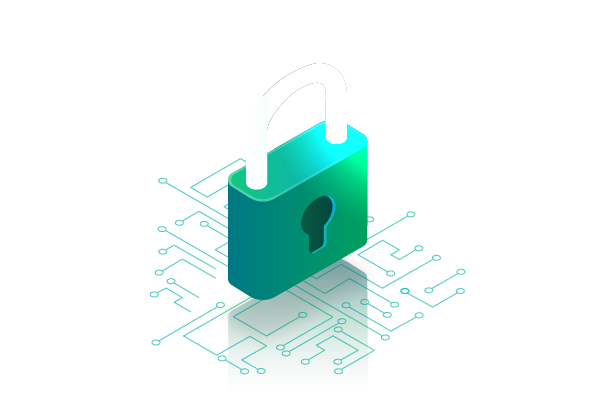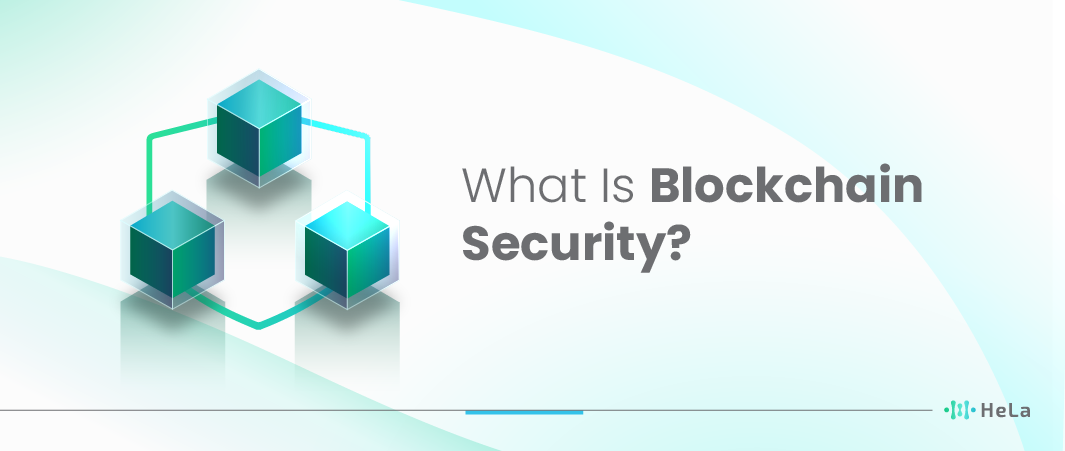Blockchain technology has brought about significant changes in how we handle transactions and exchange information. Its decentralized and transparent nature has had a profound impact on different sectors. However, with the growing adoption of blockchain, there’s a growing need to address concerns regarding its security. This article aims to shed light on the crucial aspect of blockchain security, delving into essential concepts and principles that play a pivotal role in safeguarding this revolutionary technology.
Blockchain Security, a vital component of this discussion, encompasses a range of strategies and practices aimed at protecting blockchain networks from various threats and vulnerabilities. By understanding these security measures, we can ensure the continued success and reliability of blockchain technology in our increasingly digital world.
What Is Blockchain Security?

Blockchain security is a critical aspect of ensuring the trustworthiness and reliability of blockchain networks, which have gained prominence for their ability to provide transparent and tamper-resistant record-keeping. In this context, it’s essential to delve deeper into the key components and strategies that underpin blockchain security:
Decentralization
As mentioned earlier, one of the foundational elements of blockchain security is decentralization. Instead of relying on a single central authority or server, data is distributed across a network of nodes, making it exceptionally difficult for malicious actors to manipulate or compromise the entire system. This redundancy in data storage enhances the network’s resilience.
Cryptography
Cryptographic techniques are at the heart of blockchain security. Data on the blockchain is encrypted, ensuring that only authorized parties can access and modify it. Public and private keys are used to authenticate users and protect the privacy of data. This cryptographic security extends to transactions as well, with digital signatures confirming the authenticity of each transaction.
Also Read: Distributed Identifiers (DIDs): A Comprehensive Introduction for Beginners
Consensus Mechanisms
Blockchain networks employ consensus mechanisms like Proof of Work (PoW) or Proof of Stake (PoS) to validate and add new transactions to the blockchain. These mechanisms make it computationally expensive and resource-intensive for malicious actors to manipulate the blockchain. For example, PoW requires miners to solve complex mathematical puzzles to add new blocks, which discourages attacks.
Immutable Ledger
Once data is added to a blockchain, it becomes virtually impossible to alter or delete it. This immutability is a core feature of blockchain security, as it ensures that historical records remain intact and trustworthy.
Permissioned vs. Permissionless Blockchains
Permissioned blockchains restrict participation to authorized entities, enhancing security by reducing the number of potential threats. Permissionless blockchains, like Bitcoin and Ethereum, allow anyone to participate, requiring additional security measures to protect against malicious actors.
Smart Contracts Security
In blockchain ecosystems like Ethereum, smart contracts are self-executing agreements with predefined rules. Ensuring the security of these contracts is crucial, as vulnerabilities can lead to significant financial losses. Auditing and testing smart contracts for vulnerabilities are essential components of blockchain security.
Network Security
The physical and digital security of nodes and the network infrastructure is vital. Secure node operation, secure key management, and robust network protocols help protect against threats such as Distributed Denial of Service (DDoS) attacks and Sybil attacks.
Regular Auditing and Testing
Continuous monitoring, auditing, and penetration testing are essential for identifying and mitigating security vulnerabilities and weaknesses within the blockchain network.
Privacy Considerations
While blockchain provides transparency, ensuring the privacy of sensitive data is crucial. Privacy-focused technologies like zero-knowledge proofs and confidential transactions are used to protect confidential information on public blockchains.
Regulatory Compliance
Blockchain networks must also adhere to legal and regulatory requirements, such as Know Your Customer (KYC) and Anti-Money Laundering (AML) regulations, to prevent illicit activities and ensure security.
Blockchain security is a multifaceted approach that combines decentralization, cryptography, consensus mechanisms, and various other strategies to safeguard data, transactions, and the overall integrity of blockchain networks. As the technology continues to evolve, so do the challenges and solutions in maintaining robust blockchain security.
The Role of Cryptography

Cryptography is the cornerstone of blockchain security, providing the necessary mechanisms to safeguard the integrity, confidentiality, and authenticity of data and transactions within the blockchain network. This critical role of cryptography can be further understood by exploring the various aspects and components involved:
Data Encryption
Cryptography is employed to encrypt the data within blocks, rendering it unreadable to anyone without the appropriate decryption key. This ensures that sensitive information, such as transaction details or user identities, remains confidential and secure.
Transaction Signing
Every transaction conducted on a blockchain is signed with a private key, which is a unique, confidential key known only to the owner. This digital signature serves as proof of ownership and authorization for the transaction. It also verifies that the sender is indeed the legitimate owner of the assets being transferred.
Public and Private Keys
Public keys and private keys are fundamental cryptographic elements in blockchain. Public keys are shared openly and serve as the recipient’s address, allowing others to send assets to that address. Private keys, on the other hand, are closely guarded secrets and are used to sign transactions. The relationship between these keys is asymmetric, ensuring that while anyone can verify a transaction using the public key, only the owner of the private key can initiate transactions.
Immutable Records
The cryptographic hash functions are used to create unique digital fingerprints, or hashes, for each block in the blockchain. These hashes are interconnected, meaning that any change in the data within a block would alter its hash. Since each block’s hash is included in the next block, any tampering with the data would require recalculating the hash for not only that block but all subsequent blocks. This makes it computationally infeasible for malicious actors to alter past transactions without detection.
Consensus Mechanisms
Cryptography is also central to the consensus mechanisms used in blockchains, such as Proof of Work (PoW) and Proof of Stake (PoS). These mechanisms rely on cryptographic puzzles and digital signatures to validate and add new blocks to the blockchain. They ensure that only nodes with the computational power or stake necessary can participate in block creation, thus preventing malicious actors from gaining control of the network.
Identity Verification
Public keys, acting as addresses, are the means by which participants in the blockchain network are identified. The authenticity of these addresses is established through the use of cryptographic signatures. This ensures that participants can trust the identity of the parties involved in transactions.
Protection Against Double Spending
Cryptographic techniques are used to prevent double spending, a situation where the same digital asset is used in multiple transactions. By verifying the authenticity of transactions through digital signatures and cryptographic consensus, blockchain ensures that once a digital asset is spent, it cannot be spent again.
The role of cryptography in blockchain security is multifaceted, encompassing data protection, transaction validation, identity verification, and the maintenance of an immutable ledger. It is cryptography that enables the trust, transparency, and security that make blockchain technology a robust solution for a wide range of applications beyond cryptocurrencies, including supply chain management, voting systems, and more.
Immutability and Consensus

Immutability and consensus are fundamental concepts in blockchain technology that work in tandem to ensure the security and integrity of the distributed ledger. Immutability, as previously mentioned, refers to the property that once data is added to the blockchain, it cannot be changed or deleted. This property is crucial for several reasons:
- Data Integrity: Immutability guarantees that the data stored on the blockchain is trustworthy and has not been tampered with. This is especially important in applications where data integrity is critical, such as financial transactions, supply chain tracking, and healthcare records.
- Auditability: Immutability enables easy auditing of the entire transaction history on the blockchain. Anyone can independently verify the history of transactions, providing transparency and accountability.
- Trust: The immutability of blockchain data builds trust among participants in the network. Users can rely on the fact that once a transaction is confirmed, it is set in stone and cannot be altered without consensus.
Consensus mechanisms, such as Proof of Work (PoW) and Proof of Stake (PoS), play a pivotal role in achieving and maintaining blockchain immutability. These mechanisms ensure that all participants in the network agree on the validity of transactions and the order in which they are added to the blockchain. Here’s how they contribute to the immutability of blockchain:
- Proof of Work (PoW): In PoW, miners compete to solve complex mathematical puzzles to add a new block to the blockchain. Once a block is added, it is computationally expensive to change any of the data within it. Furthermore, the consensus mechanism makes it extremely difficult for a single entity to control the majority of the network’s computational power, thus preventing malicious alterations.
- Proof of Stake (PoS): PoS operates differently, where validators are chosen to create new blocks based on the amount of cryptocurrency they “stake” as collateral. Validators have a financial interest in maintaining the integrity of the blockchain, as they can lose their staked assets if they act maliciously. This economic incentive reinforces the immutability of the blockchain.
In both cases, consensus mechanisms create a high level of security and trust in the network, making it exceedingly improbable for any entity to manipulate or change historical data on the blockchain. This immutability, coupled with consensus, underpins the foundation of blockchain technology and its potential to revolutionize various industries by providing a secure and tamper-resistant ledger for digital transactions and data.
Smart Contracts and Code Auditing
Smart contracts, self-executing code on the blockchain, have gained popularity in various applications such as decentralized finance (DeFi), non-fungible tokens (NFTs), supply chain management, and more. These contracts are designed to automate and enforce agreements without the need for intermediaries, offering increased transparency and efficiency in various industries.
Ensuring the security of these smart contracts is of paramount importance. The immutable nature of the blockchain means that once a contract is deployed, it cannot be altered or revoked. Any vulnerabilities or flaws in the code can lead to significant financial losses or other adverse consequences. To mitigate these risks, code audits by experts are essential.
Code auditing involves a thorough examination of the smart contract’s codebase by experienced developers and security professionals. They scrutinize the code to identify vulnerabilities, bugs, or logical flaws that could be exploited by malicious actors. These vulnerabilities might include issues related to input validation, data handling, authorization, and potential reentrancy attacks. The goal of a code audit is to ensure that the smart contract functions as intended and is resistant to potential attacks.
In addition to code auditing, following best practices during the development of smart contracts is crucial. Two fundamental principles that should be adhered to are the principles of least privilege and separation of concerns.
- Principle of Least Privilege: This principle dictates that smart contracts should only have the permissions and access they absolutely need to perform their intended functions. Unnecessary access or privileges can open up security vulnerabilities. For example, a contract that manages tokens should only have access to the necessary token functions and not unnecessary external contracts or operations.
- Separation of Concerns: This principle suggests that different aspects of a smart contract’s functionality should be isolated from each other. Separating concerns makes it easier to understand, test, and secure different parts of the contract. For example, separating token transfer logic from governance or administrative functions can help prevent unintended actions.
By following these principles and conducting thorough code audits, developers can minimize potential attack surfaces, reduce the risk of security breaches, and enhance the overall trustworthiness of smart contracts. In the rapidly evolving blockchain space, security and best practices are paramount to the success and adoption of smart contract applications.
Secure Key Management
In the world of blockchain technology, secure key management plays a pivotal role in ensuring the safety and integrity of digital assets. Cryptocurrencies and blockchain-based applications rely on private keys to authorize transactions and access digital assets. Consequently, the security of these private keys is of utmost importance, as any compromise can result in financial losses and potential breaches of trust. Here are some key aspects of secure key management in the blockchain space:
Importance of Private Keys
Private keys are the cryptographic secrets that grant ownership and control over digital assets on a blockchain. They are the digital equivalent of a physical key to a safe. Losing a private key or having it stolen means losing access to your digital assets permanently.
Hardware Wallets
Hardware wallets are specialized devices designed solely for the secure storage and management of private keys. They are considered one of the most secure ways to store cryptocurrencies. These wallets are offline and immune to online attacks, making them resistant to hacking attempts.
Multi-Signature Wallets
Multi-signature (multisig) wallets require multiple private keys to authorize transactions. This means that even if one private key is compromised, an attacker cannot access the assets without the other required signatures. Multisig adds an extra layer of security to the key management process.
Also Read: Private Key and Public Key: Definition and Differences
Secure Key Management Practices
Beyond hardware wallets and multisig solutions, it’s essential to follow secure key management practices. These include:
- Backup Strategies: Create redundant backups of your private keys in secure, offline locations. This ensures that even if one copy is lost or damaged, you can still recover your assets.
- Encryption: Encrypt your private keys with strong, up-to-date encryption algorithms. Ensure that only authorized parties have access to the decryption keys.
- Regular Updates: Keep your software, wallets, and hardware devices up to date with the latest security patches and firmware updates to protect against known vulnerabilities.
- Phishing Awareness: Be vigilant about phishing attempts. Double-check the authenticity of websites and communication related to your blockchain accounts or wallets to avoid falling victim to scams.
- Cold Storage: Consider using cold storage solutions, such as paper wallets or hardware wallets, for long-term asset storage. These are not connected to the internet and are less susceptible to online threats.
Secure key management is the foundation of blockchain security. Whether you’re an individual investor or a blockchain-based business, implementing robust key management practices, utilizing hardware wallets, and considering multi-signature solutions are essential steps to protect your digital assets from loss or theft. Stay informed about evolving security threats and best practices to safeguard your investments in the blockchain ecosystem.
Conclusion
In conclusion, blockchain security is an integral aspect of the blockchain ecosystem. It relies on cryptographic techniques, immutability, consensus mechanisms, smart contract audits, and secure key management to ensure the safety of digital assets and data. As blockchain technology continues to evolve and gain widespread adoption, understanding these fundamental concepts and principles becomes crucial.
Blockchain’s promise of transparency and decentralization comes with a responsibility to protect it from malicious actors. By adhering to the principles outlined in this article and staying informed about emerging threats, we can harness the full potential of blockchain technology while mitigating security risks. Remember that blockchain security is a collaborative effort, and staying vigilant is key to a safer digital future.
Disclaimer: The information provided by HeLa Labs in this article is intended for general informational purposes and does not reflect the company’s opinion. It is not intended as investment advice or recommendations. Readers are strongly advised to conduct their own thorough research and consult with a qualified financial advisor before making any financial decisions.

Joshua Soriano
I am Joshua Soriano, a passionate writer and devoted layer 1 and crypto enthusiast. Armed with a profound grasp of cryptocurrencies, blockchain technology, and layer 1 solutions, I've carved a niche for myself in the crypto community.
- Joshua Soriano#molongui-disabled-link
- Joshua Soriano#molongui-disabled-link
- Joshua Soriano#molongui-disabled-link
- Joshua Soriano#molongui-disabled-link

